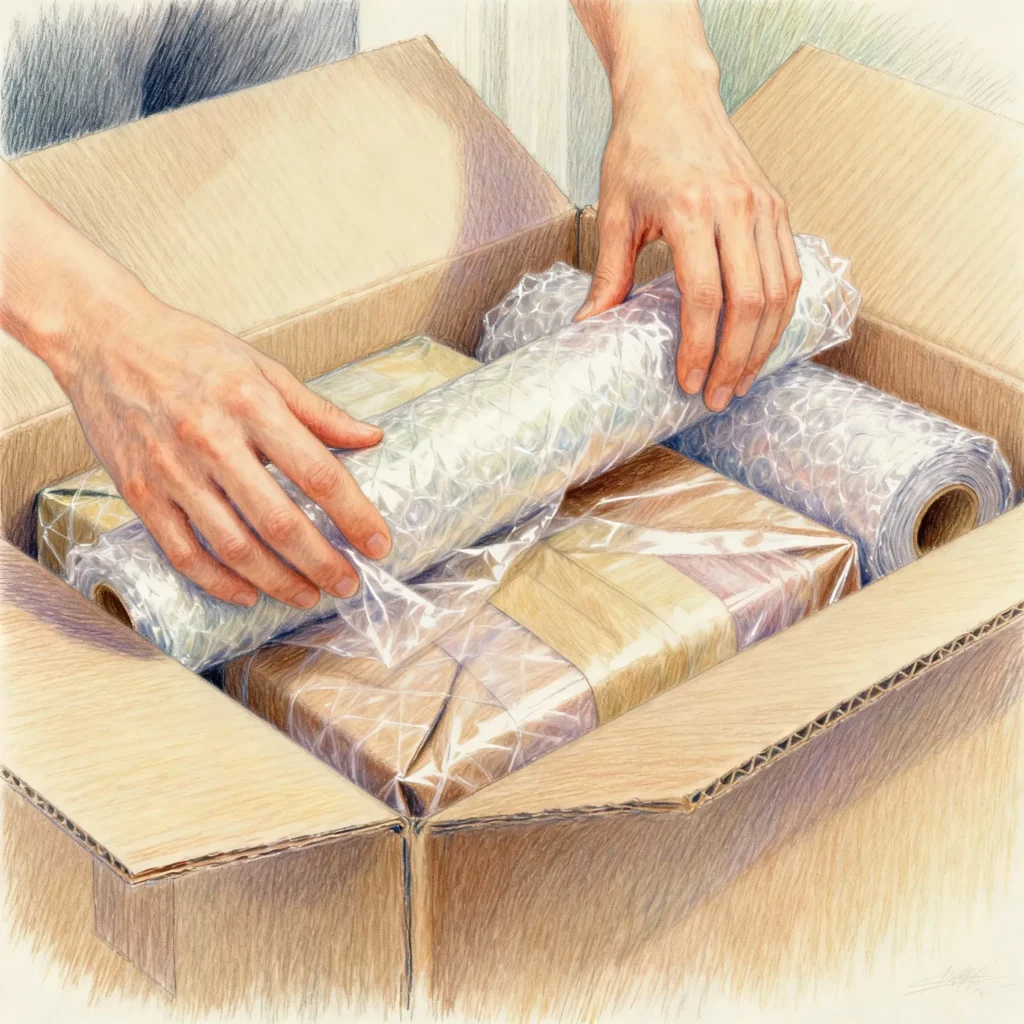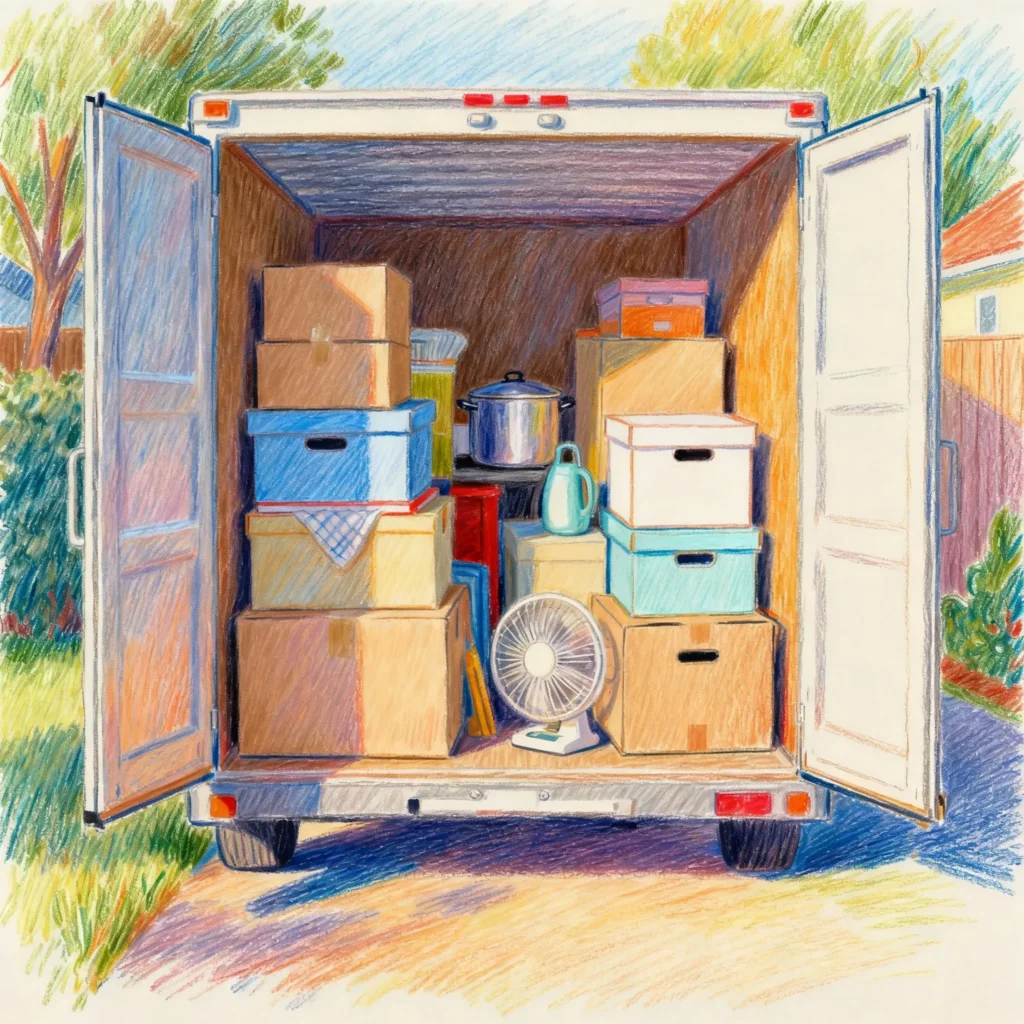Proper packing is key to a successful move and protecting your belongings throughout the journey. A well-organized packing approach not only prevents damage but also makes unpacking easier and faster at your new home.

- Planning and Preparation
Begin your packing well in advance by mapping out a detailed plan for each room. Invest in high-quality packing materials like sturdy boxes in assorted sizes, bubble wrap, packing paper, and strong packing tape. Consider reusable packing solutions such as plastic bins for added durability. - Effective Labeling System
Clearly label every box with its contents and the name of the destination room. Incorporate color-coding or numbering methods for quick identification and streamlined unloading. Keep an inventory list that matches your labels for added organization and easy tracking. - Safe Packing Techniques
Pack heavy items in smaller boxes to avoid overloading and use larger boxes for lighter items. Fill empty spaces inside boxes with packing materials—such as crumpled paper or foam peanuts—to prevent shifting during transit. Ensure fragile items are wrapped individually with bubble wrap or towels and use dividers where necessary. - Handling Special Items
Fragile belongings require extra care—wrap each item carefully and utilize specialized packing supplies when available. Important documents, valuable jewelry, and cash should be kept with you during the move rather than packed with other items. For electronics, take photos of wiring setups before disconnecting to facilitate easy reassembly. - Additional Recommendations
Plan your packing schedule realistically, allocating extra time for delicate or bulky items. - Communicate your packing preferences clearly to your moving team or helpers to ensure items are handled appropriately.
Following these practical packing tips will help make your move safer, more efficient, and less stressful. Proper preparation lays the foundation for a smooth transition into your new home.
Practical Tips and Solutions
- Use soft household items like towels, blankets, and clothing as cushioning material to protect fragile items and save on packing supplies.
- Seal boxes securely with reliable tape, reinforcing corners and seams where needed.
- Separate essentials in a dedicated “open first” box containing items like toiletries, chargers, and basic kitchenware.
- Disassemble large furniture pieces when possible to save space and reduce moving difficulty; keep screws and small parts in labeled bags.
- Avoid overpacking boxes to keep them manageable and reduce the risk of injury or damage.
Porcelain and Glassware
- Materials: Use bubble wrap and packing paper for cushioning, combined with sturdy small-sized cardboard boxes.
- Packing Tips: Wrap each item separately with multiple layers of bubble wrap to avoid direct contact. Avoid overpacking boxes to prevent pressure damage. Clearly label boxes as “Fragile” for careful handling.
Silver Items
- Materials: Wrap with soft cloth or anti-tarnish paper; place in small boxes or padded bags to prevent scratching.
- Packing Tips: Wrap each piece individually to protect against abrasion. Store in well-padded containers to avoid dents and tarnishing during transport.
Figurines and Delicate Items
- Materials: Use bubble wrap, soft cloth, and foam padding. Pack into small boxes with dividers to keep items separate.
- Packing Tips: Protect fragile protrusions and delicate parts by reinforcing with padding. Valuable pieces should be packed and transported separately to ensure maximum care.
Large Household Appliances
- Materials: Protect with air bubble wrap and secure with strong tape. Use original boxes if available; otherwise select sturdy cardboard boxes.
- Packing Tips: Drain all liquids before packing. Secure doors and remove or fasten loose parts to prevent damage during transport.
Small Household Appliances
- Materials: Wrap appliances in bubble wrap or cloth and place them into sturdy boxes.
- Packing Tips: Keep cables and accessories in labeled plastic bags placed inside the box with the main item.
Bedding and Accessories
- Materials: Utilize vacuum seal bags or large, soft bags to minimize space. Use soft, flexible boxes or bags suitable for fabric items.
- Packing Tips: Ensure items are dry before packing to prevent mold. Vacuum-seal bags reduce volume and simplify storage.
Clothing
- Materials: Pack in bags, suitcases, or garment covers. Use sturdy boxes for folded clothing; hang delicate items on hangers with covers.
- Packing Tips: Use vacuum bags to save space while keeping clothes fresh and wrinkle-free.
Family Photos and Important Documents
- Materials: Use paper padding, sturdy folders, and polyethylene sleeves. Pack in small, secure boxes.
- Packing Tips: Protect photos and documents from moisture and bending by storing them flat and wrapped. Label boxes clearly for easy access.
Tools
- Materials: Wrap tools in cloth or paper; use bubble wrap for sharp or delicate edges. Store in sturdy boxes or crates.
- Packing Tips: Pack sharp tools separately to avoid injury. Keep power tools disassembled with cables separated and labeled.
Outdoor Equipment
- Materials: Use bubble wrap or cloth padding; pack large items in big boxes or bags suitable for irregular shapes.
- Packing Tips: Disassemble large equipment to reduce size. Extra padding on sharp edges protects both the item and other cargo.
Food
- Materials: Use paper or polyethylene wraps; pack fragile food in medium-sized boxes.
- Packing Tips: Avoid packing perishable food without refrigeration. Fragile food like glass jars should be wrapped and boxed separately.
Books and Documents
- Materials: Use paper fillers to fill space; pack in small boxes for easier handling.
- Packing Tips: Don’t overfill boxes to keep weight manageable. Fill gaps to prevent books from shifting and causing damage.
Electronics
- Materials: Wrap in bubble wrap and use anti-static bags. Transport in original packaging or sturdy cardboard boxes.
- Packing Tips: Label cables separately and store them with the device. Avoid crushing or heavy pressure on electronics.
Paintings and Mirrors
- Materials: Wrap items in bubble wrap and use cardboard corner protectors. Transport vertically in specialized boxes or covers.
- Packing Tips: Protect edges and glass surfaces carefully. Transport paintings upright to prevent damage.
Jewelry and Valuable Items
Materials: Wrap in soft cloth; store in small specialized boxes or safes.
- Packing Tips: Keep valuables with you personally during the move and avoid using large boxes that can get lost or damaged.
Sports Equipment
- Materials: Use cloth or bubble wrap; pack into special covers or boxes designed for sports gear.
- Packing Tips: Disassemble larger parts to reduce size and risk of damage. Secure moving components like wheels or adjustable parts.
Toys and Children’s Items
- Materials: Pack in bags, cloth, containers, or boxes.
- Packing Tips: Separate small parts into labeled containers. Soft toys can be vacuum-packed to reduce space.
Following these packing guidelines ensures your belongings are well-protected and organized throughout your move. Using the right materials and techniques safeguards your items and makes both packing and unpacking faster and easier.
By choosing our company, you gain the advantage of professional movers who will efficiently and carefully handle the packing and transportation of your possessions. Our expertise guarantees your items remain fully protected from start to finish, giving you peace of mind and a stress-free moving experience.

Practical tips for packing things and some items for smooth and organized movement. Download
Contact us by phone or reach out to our company through any
communication method that’s most convenient for you. We are
here to assist you promptly and make your moving experience
as smooth as possible.
Address: 7611 N HOLLYWOOD WAY APT A BURBANK CA 91505-1036
Phone: +1 (888) 711-4778
Email: [email protected]
